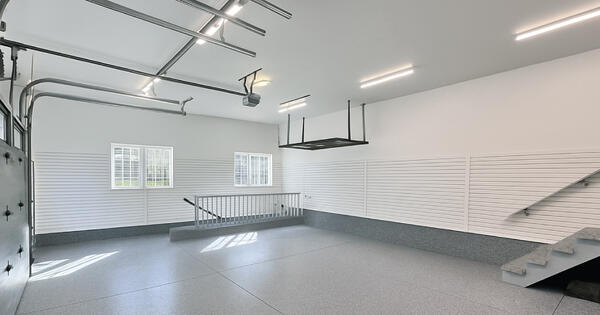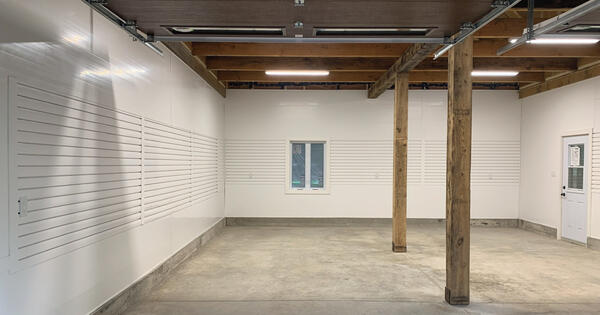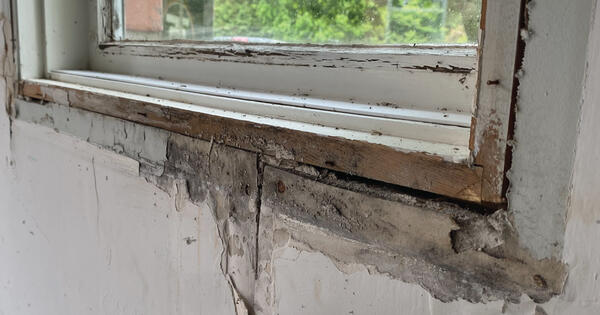Drywall waterproofing is mostly a myth. While there are some drywall types that are more water resistant than others and the performance of drywall can be improved with surface coatings in damp environments, drywall itself can never truly be 100% waterproof. For a waterproof wall and ceiling system that will never grow mold or mildew, you’ll have to give up on drywall completely and opt for a PVC-based product like Trusscore Wall&CeilingBoard.
The Reality of Waterproof Drywall (and Why It Doesn’t Work)
- Waterproof drywall has been a highly sought after building material in the construction and home improvement worlds
- While it’s possible to improve the water performance of drywall with paints and coatings, surface treatments will never truly make drywall waterproof
- The same is true of so-called greenboard drywall, which has an improved performance profile in wet and damp environments, but isn’t truly waterproof
- A PVC-based product like Trusscore Wall&CeilingBoard, is the answer when you require proper waterproof performance
Why Waterproof Drywall
Drywall is made from gypsum and paper cladding, which are two highly absorbent materials. In certain rooms of your house – like basements, bathrooms, laundry rooms, and kitchens — that are known to be humid, it's only a matter of time before your drywall starts to show tell-tale signs of water damage.
When drywall gets wet, bad things happen: The walls bubble and swell. The paint becomes stained and discolored. Mold and mildew can grow. And as the gypsum that’s sandwiched between the drywall’s paper layers degrades, the sheet of drywall loses its structural integrity. Once that happens, the only solution is to rip out the drywall and replace it, which is expensive and inconvenient.
In fact, most professional contractors advise not to use any drywall at all as a backing for tile in a shower or sink area. Instead, they recommend using a product like cement board with a moisture barrier behind it. Likewise, drywall isn’t recommended for ceilings. Because if it does get wet, it can fail structurally and create even bigger problems.
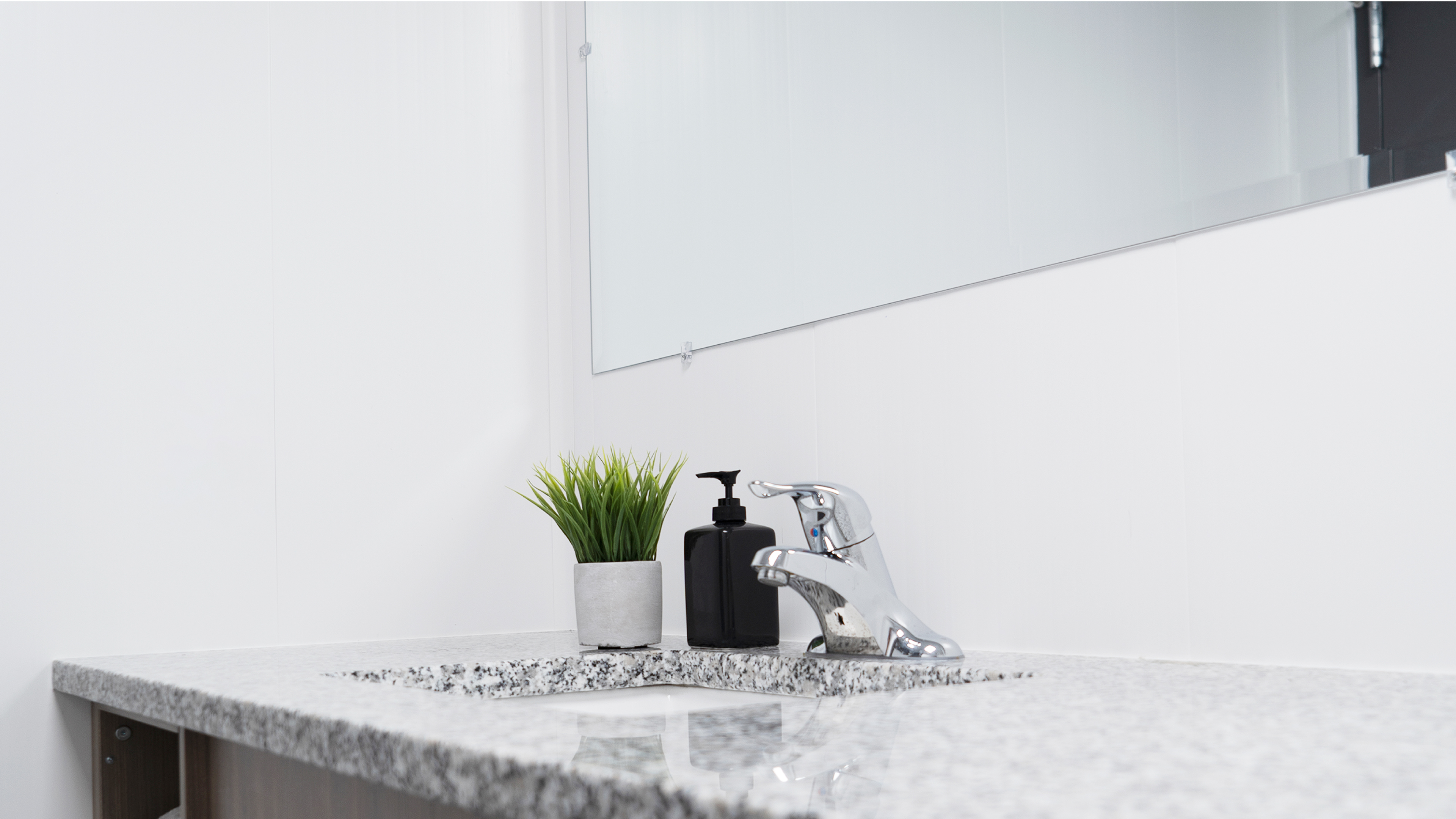
Find a Retailer
Trusscore works with thousands of retailers across North America to bring you the best service and access to our products.
How to Waterproof Drywall
To prevent costly and time-consuming repairs from water damage and improve the water resistance of drywall, there are two options you can choose from: You can apply a waterproofing primer to standard drywall, or you can buy a water-resistant version of drywall from a local retailer.
Using a Waterproof Primer
The most popular way to waterproof your drywall is to use oil- or latex-based waterproofing primer. These primers are made by most paint manufacturers and are designed to prevent mold and mildew from growing on the surface of your drywall. The steps to waterproof drywall with primer are also quick and easy:
Clean any dust off the drywall using a wet dry vac or microfiber cloth. Don’t use water or cleaning supplies — this can introduce moisture to the drywall which is counterintuitive to the whole waterproofing process.
After the drywall is free of dust, apply the primer in a thin, even layer using a paint roller brush. For corners and along baseboards, use a smaller paint brush.
Apply a waterproofing paint over the primer for added protection. Waterproofing paint provides a finished look and adds an extra layer of defense against mold and mildew growth.
Buying a Water-Resistant Waterproof Drywall Alternative
You can also buy water-resistant drywall known as “greenboard drywall.” The paper facing on greenboard drywall has already been treated with a waxy coating and chemicals that are resistant to moisture and mildew. Greenboard offers better performance than conventional drywall in damp or wet environments and can increase the lifespan of your walls in moderately humid rooms.
But a note of caution: Neither of these solutions deliver a 100% waterproof result. They’ll improve the drywall sheet’s water or moisture resistance but, if enough moisture is present, the sheet is still subject to damage and will need to be replaced.
The only way to have completely waterproof walls and ceiling performance is to use a drywall alternative like Trusscore Wall&CeilingBoard.
Trusscore Wall&CeilingBoard is a Waterproof Drywall Alternative
Made from PVC, pre-finished Trusscore Wall&CeilingBoard panels are a 100% waterproof alternative to drywall for interior spaces.
Thanks to its tongue-and-groove interlocking system, Trusscore Wall&CeilingBoard panels create a watertight seal that protects your interior walls from water damage. Plus, the non-porous surface panels are designed to shed water and will never grow mold or mildew no matter where it’s installed in your home.
In addition to being waterproof, Trusscore Wall&CeilingBoard has several other benefits over drywall, too:
- It’s stronger and more durable. Trusscore wall and ceiling panels are scratch, dent, and impact resistant so you never have to worry about damaging your walls. Trusscore panels are also designed to outlive the buildings they're installed in, so you can feel confident your walls will look their best for a very long time.
- It’s easier to install. Trusscore Wall&CeilingBoard panels weigh 40% less than drywall and install four times faster. Panels come with a pre-punched screw flange and a tongue and groove interlocking system, making installation a breeze for DIYers and contractors alike. Equipped with a set of basic tools, you can plan to have Trusscore Wall&CeilingBoard installed in a single afternoon – no mudding, taping, priming, or painting required.
- It’s easier to clean. The smooth, non-porous surface of Trusscore Wall&CeilingBoard means panels clean with a simple wipe. For more stubborn scuffs or grime, you can feel confident using detergent, chemical cleaners, melamine sponges, and even your pressure washer (if panels are installed in your garage) to keep your panels looking good as new.
- It seamlessly integrates with Trusscore SlatWall to maximize your storage space. When you install drywall in your home, you’ll have limited options for on-the-wall storage. With Trusscore, you can add Trusscore SlatWall to your order and seamlessly integrate it with Trusscore Wall&CeilingBoard. The 8-foot-long interlocking panels can be installed as a track, section, half wall, or full wall, so you can turn as much — or as little — of your wall into storage space as you need.
Where Can I Install a Waterproof Drywall Alternative like Trusscore Wall&CeilingBoard?
Trusscore Wall&CeilingBoard and Trusscore SlatWall are best suited for high-traffic, humid, and utility areas of your home, including:
- Garages. If you’re searching for waterproof garage wall panels that can deliver a functional, great-looking space that never needs painting or refinishing, look no further: Trusscore Wall&CeilingBoard and Trusscore SlatWall combine on-the-wall storage capacity with bright, durable, water-resistant walls and ceilings to transform any garage space.
- Basements. Basements are always one drop of water away from the start of a mold problem and one storm away from an expensive and time-consuming renovation. With moisture resistant Trusscore Wall&CeilingBoard, you can be confident that your basement walls and ceilings are protected from future water damage and that you’ll avoid disastrous drywall damage in the event of a flood.
- Laundry Rooms. There’s no escaping laundry, but one sure-fire way to ease the burden is to improve your laundry room organization. Trusscore Wall&CeilingBoard and Trusscore SlatWall combine to create a laundry room organization system that will help bring order to the chaos all while withstanding frequent humidity in the room.
- Bathrooms. In bathrooms, water attacks your walls from all directions: Droplets overspray from the tub and shower while moist air slowly eats away at common materials like drywall. Bathroom ventilation fans can help, but even well-ventilated bathrooms can still have moisture issues. With Trusscore Wall&CeilingBoard, you never have to worry about water damage.
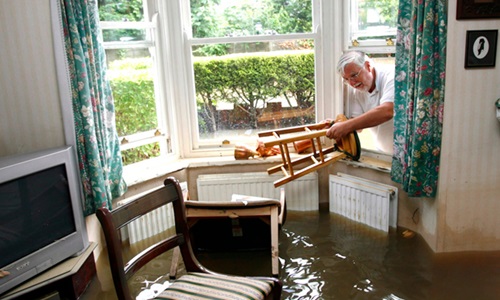
Harden Your Home’s Interior for Hurricane Season with
Trusscore Wall&CeilingBoard
Hurricane floodwater wreaks havoc on drywall — it swells, loses its strength, absorbs bacteria and chemicals, and becomes a breeding ground for mold in just 24 to 48 hours.
Made from PVC, pre-finished Trusscore Wall&CeilingBoard panels are the perfect, flood-resistant alternative for homes in hurricane-prone states.
Bottom line? There are ways to improve drywall’s water performance with the use of waterproof paints and veneers. And there are drywall types available that perform better in damp environments than others. But the answer to the question of how to waterproof drywall is: you can’t. There’s no way to have truly waterproof drywall.
The solution you can trust in wet environment? Trusscore Wall&CeilingBoard and Trusscore SlatWall. They’re made to perform when the going gets wet.

